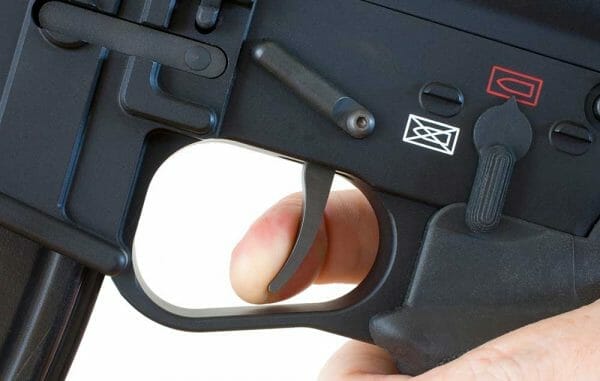Opinion

Ft Collins, CO –-(Ammoland.com)- The most difficult skill we teach.
My colleagues and I struggle daily as we energetically articulate fundamental principles of our defensive Art, from personal philosophy to selection of critical equipment.
Most agree that the chief among challenging concepts we do our best to explain to our anxious students is the correct way to manipulate a trigger, as sight/reticle alignment is maintained.
We use colorful terms like:
- “Surprise break.”
- “Stabbing”
- “Watching your front sight.”
- “‘Jerking’ the trigger.”
- “‘Forcing/fighting with’ the trigger.”
- “Bayonetting”
- “‘Milking’ or “heeling” the grip.”
- “Straight, flat, back.”
- “‘Anticipating’ discharge/recoil.”
- “‘Riding’ (exaggerating) recoil.”
In a (sometimes vain) attempt to communicate to students the criticality of maintaining sight/reticle alignment with the target, as the trigger is simultaneously, smoothly pressed directly to the rear, all the way through discharge, then catching the link immediately after discharge as sight/reticle alignment is re-established in preparation for/anticipation of the next shot.
Absent adequate/detailed explanation, the preceding terms, while commonly used, are confusing, meaningless, and unhelpful!
Happily, there are several devices I employ and have found useful in accelerating the process of the student’s understanding of important maxims of trigger manipulation.
While I don’t “endorse” products, nor services, I’m happy to recommend those I like and find applicatory and useful.
Here are three useful training tools:
- Shotkam
- Coolfire
- Mantis [read AmmoLand's review of the Mantis Training System]
“Shotkam” is a video camera that attaches to a pistol’s rail. I record the shooter’s aiming point through discharge. When the student is subsequently able to

